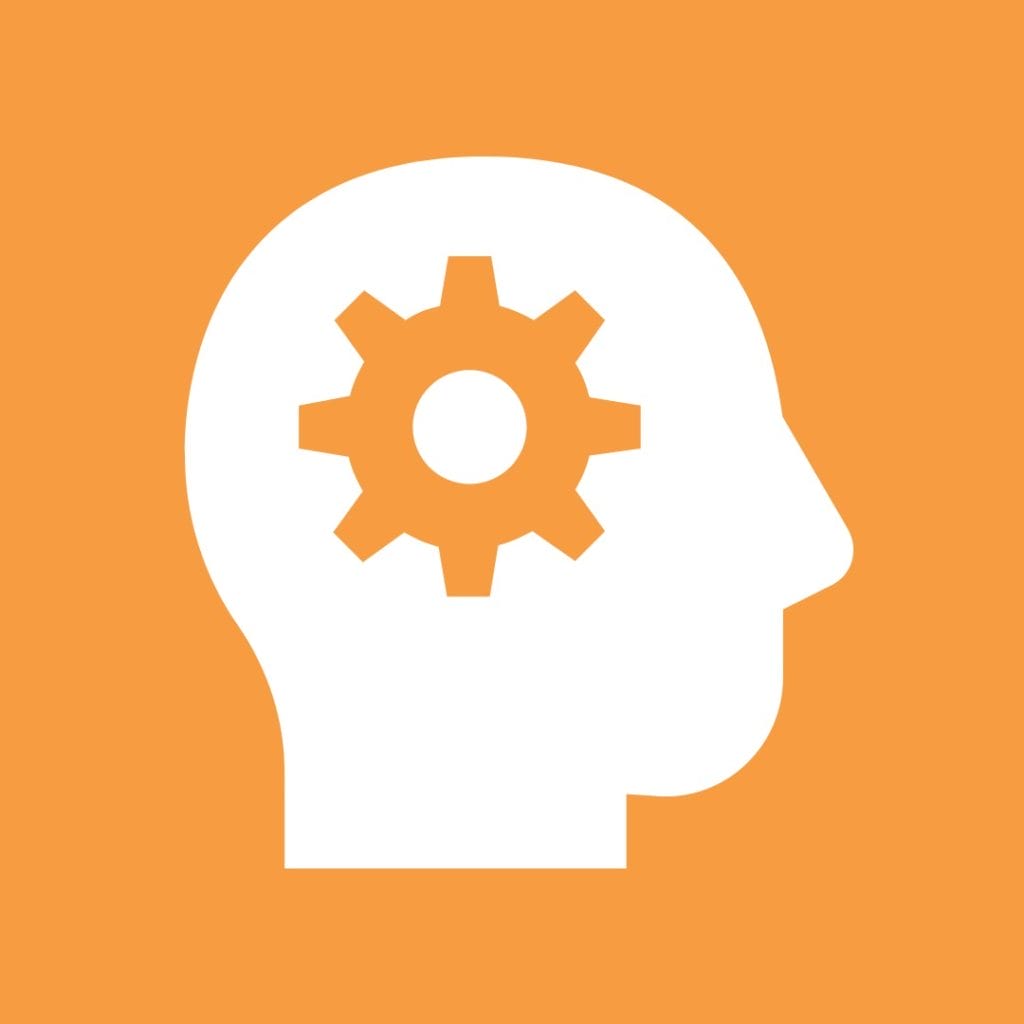The major scale may get all the attention, but have you been introduced to its close relative, the Lydian scale? In this episode, Musical U’s own Andrew Bishko discusses the Lydian and the associated Lydian Chromatic Concept – a theory that may change the way you think about the major scale forever…
Listen to the episode:
Links and Resources
Enjoying The Musicality Podcast? Please support the show by rating and reviewing it!
Rate and Review!
Transcript
Christopher: On today’s episode, we’re going to be talking about something which came up in our recent interview with Andrew Bishko, from the Musical U team. It was mentioned in the episode, but we didn’t really dwell on it because I knew I would want to have Andrew back to talk about it in much more detail. That topic is the Lydian Chromatic Concept, which I have to confess I didn’t really … I don’t think I’d even heard of before Andrew started working with us at Musical U. It was fascinating to learn from him all about this way of thinking about music.
He wrote a fantastic two part article for us, a while back, which was entitled “The Lydian Scale: Seeking the Ultimate Mysteries of Music.” If that doesn’t whet your appetite for what might be in store, I don’t know what will. Welcome to the show, Andrew. Thanks for coming back to share a little bit about this fascinating topic.
Andrew: Great. It’s great to be here, Christopher.
Christopher: Get us started from the beginning. What is the Lydian Chromatic Concept, and where did it come from?
Andrew: Well, the Lydian Chromatic Concept was originated by a guy named George Russell. He was hanging out in the forties and fifties with all the great jazz innovators of that time. He was himself a French horn player, playing some jazz French horn; but he was very interested in theory and in the new movements in jazz. One day he was talking with Miles Davis, and he asked what his goals were.
Miles said, “I want to play all the changes.” George was fascinated by his response because if anybody knew the chord changes inside out in that time period, it was Miles Davis.
He pondered in what would it be to play all the changes? He came up with a different kind of a music theory. Most of music theory that we have right now explains how … Musicians will do something. They’ll invent something. They’ll come up with something. Then, the music theorists come in and say, ‘Okay. That’s how it works. That’s how it fits.’ They’re talking about how it works, but George wanted to know why it worked. He came up with this concept, the Lydian Chromatic Concept, based on a new picture of scales and chords.
Christopher: I think to me, as a scientist, I think of it as a “model”. I don’t know, the word ‘concept’ to me can mean just an idea, but really it’s a whole model for how music is put together, I think, and how to think about things like melody and harmony.
Andrew: Yes. George called it a unified field theory of music, which is something that…
Christopher: Nice.
Andrew: Yes. Something physicists have been after right now to try and unite quantum physics with Einsteinian physics, and make one theory that explains everything.
Christopher: Well, certainly I think you can see it as the one model to rule them all. We better dive in and talk about what exact this Lydian Chromatic Concept is. What does it have to do? Maybe that’s sort of a good place to start. What does it have to do with what some of our listeners may already be familiar with, which is the Lydian mode?
Andrew: Okay. Well, the Lydian mode is a very particular scale, and a lot of times we learn the Lydian mode in reference to the major scale.
So if you have a scale like we usually think of a scale, like a C major scale. C, D, E, F, G, A, B, C. Going up and down in steps, but of course those notes can be played in any order. You can skip things like you could play a C major scale in what we call Tertian order, in all thirds; … where I’m just going up in the air. There’s the last one. Going up and skipping up in thirds. Similarly, you can play them with fifths.
Now, if you look at the circle of fifths, … the fifth is a fundamental interval in nature. It’s created with a pure mathematical ratio of two to three. What that means is that it’s a very strong sound. You hear a fifth, it has that hollow kind of resonant sound to it. This isn’t by accident or random. It’s because the fifth is the purity of the mathematical ratios. The circle of fifths is organized in this way according to this interval. If I play … a scale in the order of fifths, if I went all perfect fifths going from C. I’d go C … G … D … A … E … B … F sharp. If I sandwich all those notes down, I would get a scale starting on C … where instead of F being the fourth degree, it’s F sharp. That’s how the Lydian mode is derived.
Christopher: Interesting, so let’s pause for a second there and make sure that’s clear.
Andrew: Yeah.
Christopher: So what you did was you started from the note C, and without any regard to key signatures, or scales, or anything like that, you just took this fundamental interval of a fifth. You went up a fifth from a C to get to a G, and then you did it again from G to get to a D, and so on, until you had seven notes to build your scale with. You put them all within one octave. You just collapsed them down into one octave, and that produced your Lydian scale. Is that right?
Andrew: That’s correct. Our present harmony system, in many ways, it’s called Tertian harmony. It’s based on intervals of thirds. Like if you go back in time, back like in the Middle Ages, in the Renaissance, a third was actually considered a dissonance. The consonant intervals were the ones that were these pure mathematical ratios, which were octaves and fifths. Then, a fourth, which was the inverted fifth. They have that resonant quality. If you’re basing things on that, then you come up with a Lydian scale, rather than a major scale.
Christopher: As you pointed out there, the one real difference between those two is just one note. Even though it’s built in this quite different way, you end up with a scale which is the same as the major scale, except one note is changed, right?
Andrew: That’s correct. The only difference between here’s a C major scale. … The C Lydian … is that note. … The fourth note.
Christopher: Just play up and down those first four notes for us, if you would? I think that creates a real mood that does not sound like a major scale.
Andrew: This is the major scale … and the Lydian. …
Christopher: I think we’re immediately transported into quite a different musical … a flavor to come back to our previous episode about scales and their flavors. There’s that Lydian flavor jumping out at us. This leads on, I think to one of the big concepts that we just briefly touched on in our interview related to the Lydian Chromatic Concept, which is “gravity”. The idea that there is a tonal gravity wrapped up in all this. Can you tell us what that is and how it relates to this fourth note changing?
Andrew: Absolutely. We talk about … A lot of times, we talk about the tonic. The tonic is, in any scale, is usually the first note. It’s the note that everything is gravitating towards, or resolving to that note. … That’s an example that we’re all familiar with in terms of tonal gravity, that idea of resolution. In any interval, if you really listen carefully. This is a great ear training exercise. There’s a tonic of even an interval, and not just a scale. For example, if I play … a second, just going from C to D, and then I come back … it resolves back down to the C. It resolves to the lower note in the interval.
If I look at a major scale, I mean at a Lydian scale, rather. If you go through this, I’m not going to do the whole thing right now, but every interval resolves back down to the tonic. Every interval in this scale. It has a very restful quality and feeling to it, the Lydian scale. It’s kind of space-y [plays]… It’s very restful… There’s not a lot of tonal gravity. There’s not a lot of conflict in that scale. So it has this very space-y, relaxed thing. If you play this for people, a lot of times they’ll just, ‘Oh, it’s time for the spa. It’s time to… It’s time for a massage,’ or something.
Now, if we look at the major scale, we have that interval of the fourth. … Perfect fourth. Now the fourth … resolves upward. It’s really just an inverse of a dominant/tonic relationship, but it’s resolving upward to the fourth degree. All the other intervals are resolving down, except that fourth. It’s a very strong resolution upward.
Christopher: Cool, so I’m going to … Sorry to interrupt, but I’m going to just jump in and make sure everyone’s with us when we’re talking about “resolving”. I remember when I was first learning music, that sounded like such a music theory word. For a long time, I didn’t really know what people meant when they talked about resolving. It sounded like complex Roman numerals, and classical music analysis. All we’re talking about here is that music tends to create tension and release. We have a module on this in Musical U, because it’s so fundamental.
When you hear even just a pair of notes, like Andrew demonstrated, often it sounds musically like we’re coming home with one of them, or we’re coming to rest with one of them. One of them’s creating a little departure, and then the other one brings it home. What Andrew was saying there was that in the Lydian scale, any pair of intervals from the root note are going to resolve back to that bottom note. It’s always the bottom one that’s the tonic; whereas in the major scale with its fourth note a bit different from the Lydian scale. Actually, that one sticks out and it has an inverse tonal gravity, meaning it’s the top note that sounds like its being resolved to. Andrew, maybe you could just demonstrate that perfect fourth and augmented fourth comparison for us, so we can hear that resolution in one direction versus the other.
Andrew: Yes, yes. Very well said, Christopher. If I go to … the fourth, it resolves up. There’s a long of songs that start with that interval. Ba-dum, makes this a real solid beginning to a melody. Now, the … when I come down, it wants to go back up to that F. It doesn’t want to stay there. It wants to come back up and resolve to the F.
Now, with the augmented fourth, or tri-tone, … It’s a interesting interval because it’s symmetrical and can go both ways, and it kind of doesn’t really want to resolve anywhere. It just hangs out there. In general, it’s more of a downward … That’s more of a resolved feeling going back down to the tonic. It certainly doesn’t have that strong pull upwards like the fourth does.
Christopher: Great, and I loved a point you made in your article, which was that this is where the word ‘diatonic’ comes from that people might have heard of. Can you explain that a little bit?
Andrew: Yeah. Diatonic simply means two tonics. The diatonic scale has two strong centers of tonal gravity, which is the root and then the fourth degree. What happens is that the major scale is a very restless scale. It’s always feeling like it wants to resolve, and it can’t quite get there. That’s why you have … You could have a Beethoven coda where it’s going … I don’t know, that wasn’t played very well, but you get the idea. It can just can go on forever, this idea of tension and resolution, tension and resolution, tension and resolution.
You have this kind of a … thing in Western music. It’s interesting that the major scale wasn’t really the major scale until around the year 1600. That’s when it really solidified. Until then, there was all these various modes that were used. Just around the time, and if you look at what’s happening around 1600. You have the age of exploration. You have the Renaissance. You have the Reformation. You have this huge expansion in Western culture, this restlessness that was perfectly portrayed in the restlessness of the music in this motion forward, that’s this perpetual motion; especially if you listen to a composer of the 1700s like Bach and Handel, that there’s this motion, this incessant energy. It’s this … This is reflected in the music of that culture and in the diatonic scale.
Christopher: Fantastic. Well, I know that when I first learned about this stuff from Andrew, it blew my mind a little bit. If you’re listening to this thinking, ‘Wow, that’s kind of crazy,’ you’re not alone. I think a lot of us take the major scale for granted, as kind of the base scale that everything else comes from. But as we’ve unpacked here, arguably the major scale is a bit of an odd one. The Lydian scale is a lot more balanced, and tranquil, and has that single tonic. I hope this has set off some new thoughts in your heads and sparked some inspiration maybe. Andrew, what should people do if they’re curious, and excited, and want to do something with the Lydian scale and the Lydian Chromatic Concept, or want to learn more about it?
Andrew: Well, my first suggestion is just to explore it. Explore the Lydian scale and all the modes by … it’s really easy just to improvise; even on the piano. If you don’t know how to play piano and you just play an F with your left hand. Then you play on the white keys, you’re playing a Lydian scale. … To explore the sounds and the gravity of the scale … Then you can do that with the other modes as well, which gives you the contrast where you can feel different kinds of … of tonal gravity.
I do want to point out that George Russell wasn’t saying that the Lydian scale was better than other scales. It’s just a … It’s more the center. The Lydian scale is the center rather than the major scale. It’s the center scale that we could base everything out of to get a true picture of the range of possibilities available in music, from … more ingoing, what he called, to more outgoing.
I’m just side stepping your question. How can you learn more about it? The first thing is just to play with it. Then, go online, do some research about it. Get one of George Russell’s books … and explore it in your own music, and what it sounds like to you.
Christopher: Terrific. Well, we’ll certainly have a link in the shownotes to Andrew’s article on the topic, as well as other useful resources if you want to explore this further. If it’s good enough for Miles Davis and George Russell, it’s certainly worth some of your time and attention. I hope you’ve enjoyed this brief introduction, and thank you again, Andrew, for joining us to share this.
Andrew: Thank you, Christopher. It was a lot of fun.
The post About the Lydian Chromatic Concept appeared first on Musical U.

 Here’s an example that may help distinguish between the types of memory. Someone tells you that the C chord is made up of C, E, and G. The act of holding the information in your head for a few seconds involves short term memory. However, as soon as you start to do something with it, like play the chord, you are using working memory. In this case, you are holding the information in your head and using the information to play the chord.
Here’s an example that may help distinguish between the types of memory. Someone tells you that the C chord is made up of C, E, and G. The act of holding the information in your head for a few seconds involves short term memory. However, as soon as you start to do something with it, like play the chord, you are using working memory. In this case, you are holding the information in your head and using the information to play the chord. Students often think they’ve mastered something when they can perform it smoothly by the end of one sitting. When they come back at a different time and can’t immediately perform at the same level as before, they feel frustrated. They didn’t realize how much they were relying on their working memory.
Students often think they’ve mastered something when they can perform it smoothly by the end of one sitting. When they come back at a different time and can’t immediately perform at the same level as before, they feel frustrated. They didn’t realize how much they were relying on their working memory.
